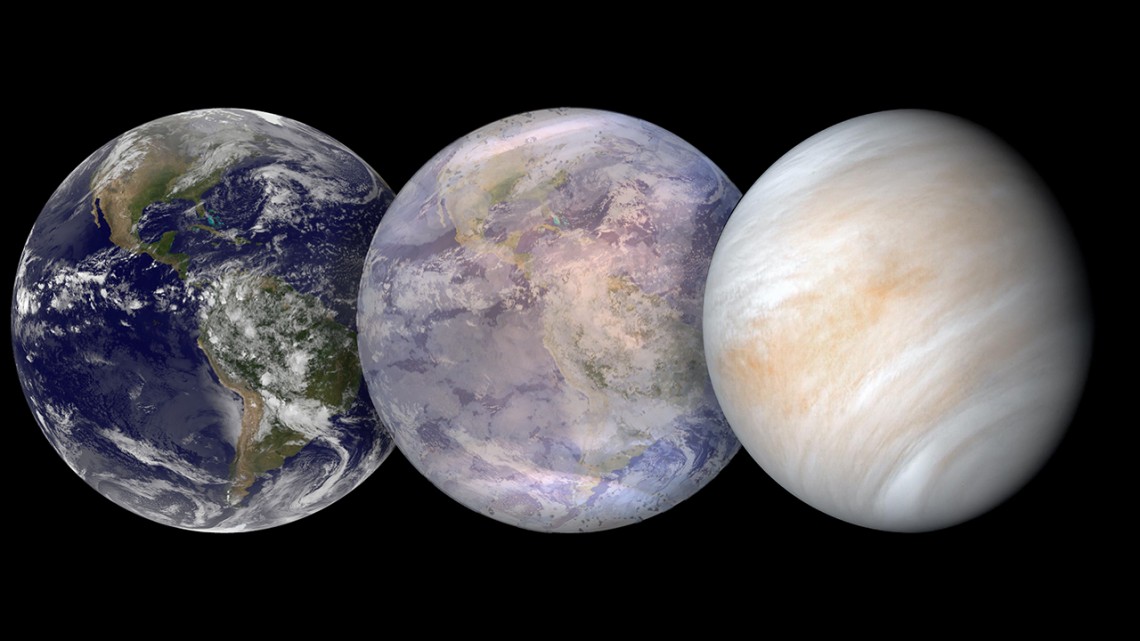Potential environmental damage to a potentially habitable exoplanet

On February 21, 2024
Our feature article for today has undergone a thorough review in accordance with Science X's editorial process and standards. The editorial team paid close attention to the article's veracity, including:
- Fact-checking
- Peer-reviewed publication
- Credible source
- Proofreading
Author: David Appell, Phys.org
This feature discusses how astrophysicists found that electric currents in the top atmosphere of a popular star's exoplanet could induce such heating that the atmosphere expands beyond the planet, potentially rendering it uninhabitable.
Historically, it was assumed that for a planet to be habitable, it would require a strong magnetic field similar to a shield, deflecting ionized particles, X-rays, and ultraviolet radiation in the stellar wind away from its atmosphere.
On Earth, this magnetic field helps in keeping harmful radiation from reaching life on the surface. Conversely, Mars, which lacks this global magnetic field, would require any potential inhabitants to dwell in underground caves for protection against solar wind.
The recent research was carried out by Ofer Cohen from the Lowell Center for Space Science and Technology at the University of Massachusetts Lowell and his colleagues. Their research focuses on whether the ionosphere of Trappist-1e contains electric currents which may cause the atmosphere to heat, expand and ultimately escape into space.
TRAPPIST-1e, located in the Aquarius constellation approximately 41 light-years from Earth, is a cool M-dwarf star. Its solar system, with seven seen exoplanets, is among the most extensively studied systems outside our own.
Three of these planets fall within the star's habitable zone, where surface temperatures could permit the existence of liquid water. M-dwarfs, which make up about 70% of stars in the universe, are cooler than our sun, meaning these habitats are much closer to these stars.
The exoplanet Trappist-1e was found in 2017. It is an Earth-like, rocky planet with an average density only 2% larger than Earth's, and its surface gravity is 82%. As such, it has a balance temperature of 246 Kelvin, just 9 K below that of Earth.
While Trappist-1e is among the most intriguing exoplanets discovered so far, there's a question as to whether it even has an atmosphere. Stronger atmospheric stripping by stellar winds is expected due to its proximity to its star.
Earlier research indicated that Trappist-1's stellar winds could strip a hydrogen-rich atmosphere from its exoplanets through photoevaporation. However, the diverse possible atmospheric environments make it challenging to model these planets.
Another possible cause for the atmosphere loss is when external charged stellar winds hit the upper ionized atmosphere. In earlier studies, Cohen and his colleagues found that Trappist exoplanets e, f, and g could experience resistive heating because of direct current, potentially capable of stripping their atmospheres.
The team has also modeled another event that could influence Trappist-1 planetary atmospheres: heating caused by the planet's own motion. As the planet revolves around the star, alternating electric currents will form in the planet's upper atmosphere due to changes in the stellar magnetic field. These currents can dissipate, resulting in what's known as voltage-driven Joule heating.
Because astronomers do not have measurements of Trappist-1's stellar wind and magnetic field, the group used validated physics-based models to calculate its energy output, its solar wind and the changing magnetic field at the Trappist-1e distance. Using reasonable estimates for the width of Trappist 1e's ionosphere, its conductance and the magnitude of the changing magnetic field, their results show that the Joule heating energy flux in the upper atmosphere of the planet would vary from 0.01 to 100 W/m2, a significant amount of heating that may be greater than that due to extreme-ultraviolet and 1 to 10% of the stellar energy flux at the planet.
They conclude that such intense values could cause a strong atmospheric escape and 'could lead to a rapid loss of the atmosphere.' It means astrobiologists and others should take Joule heating into account when considering an exoplanet's habitability.
'It is likely that both mechanisms operate together in close-in exoplanets,' said Cohen. 'Therefore, our work (and our solar system knowledge) may suggest that exoplanets located very close to the star are likely bare planets with no atmosphere.'
Cohen notes that their work has a political element, as many teams are investigating the atmospheres of Trappist-1 planets. The James Webb Space Telescope (JWST) has already started to observe this system's planetary atmospheres (finding none), and there are plans to do more. 'This may be a bit of a waste of resources if there is no atmosphere to study,' said Cohen.
Journal information: Astrophysical Journal
© 2024 Science X Network




